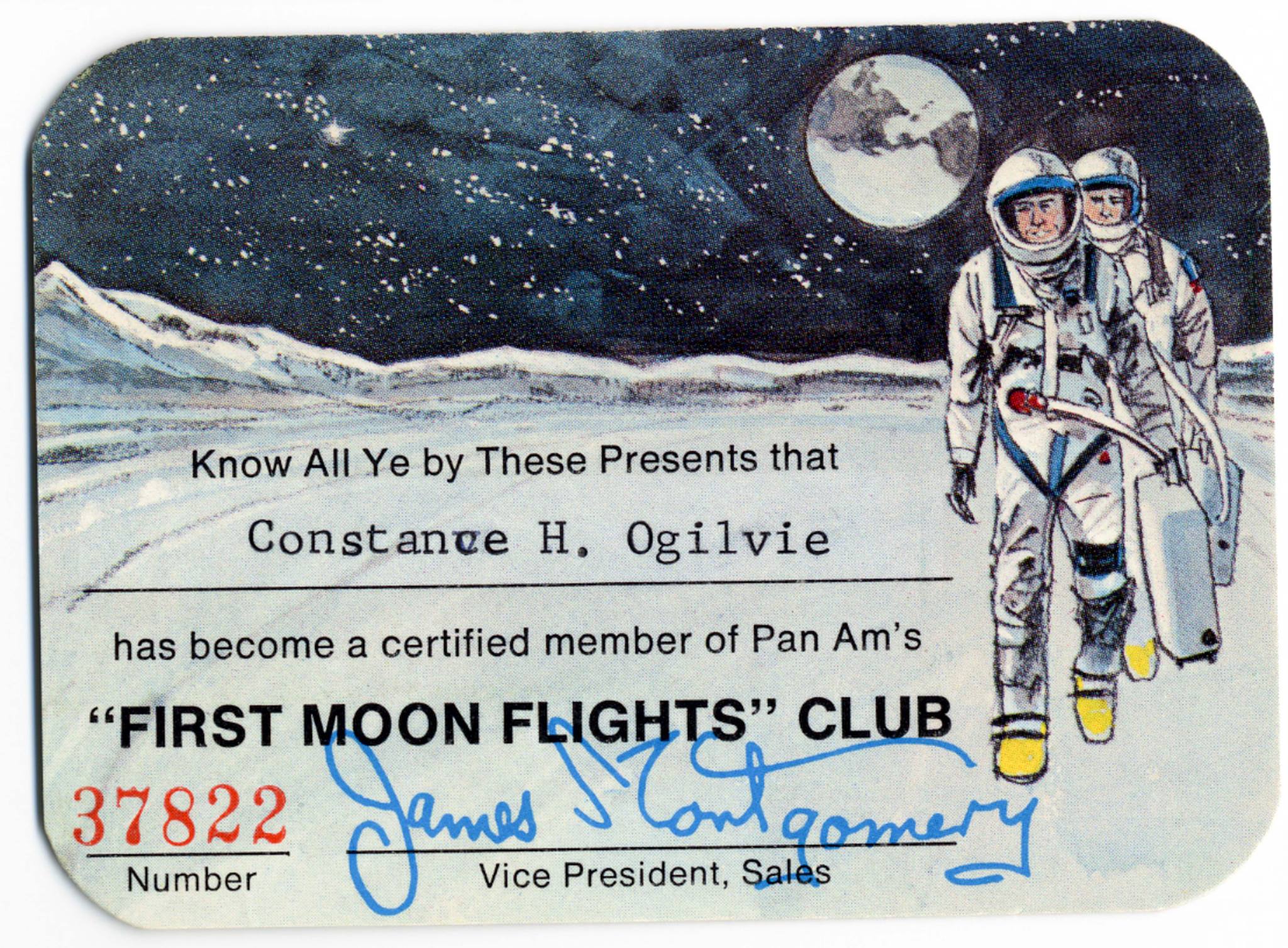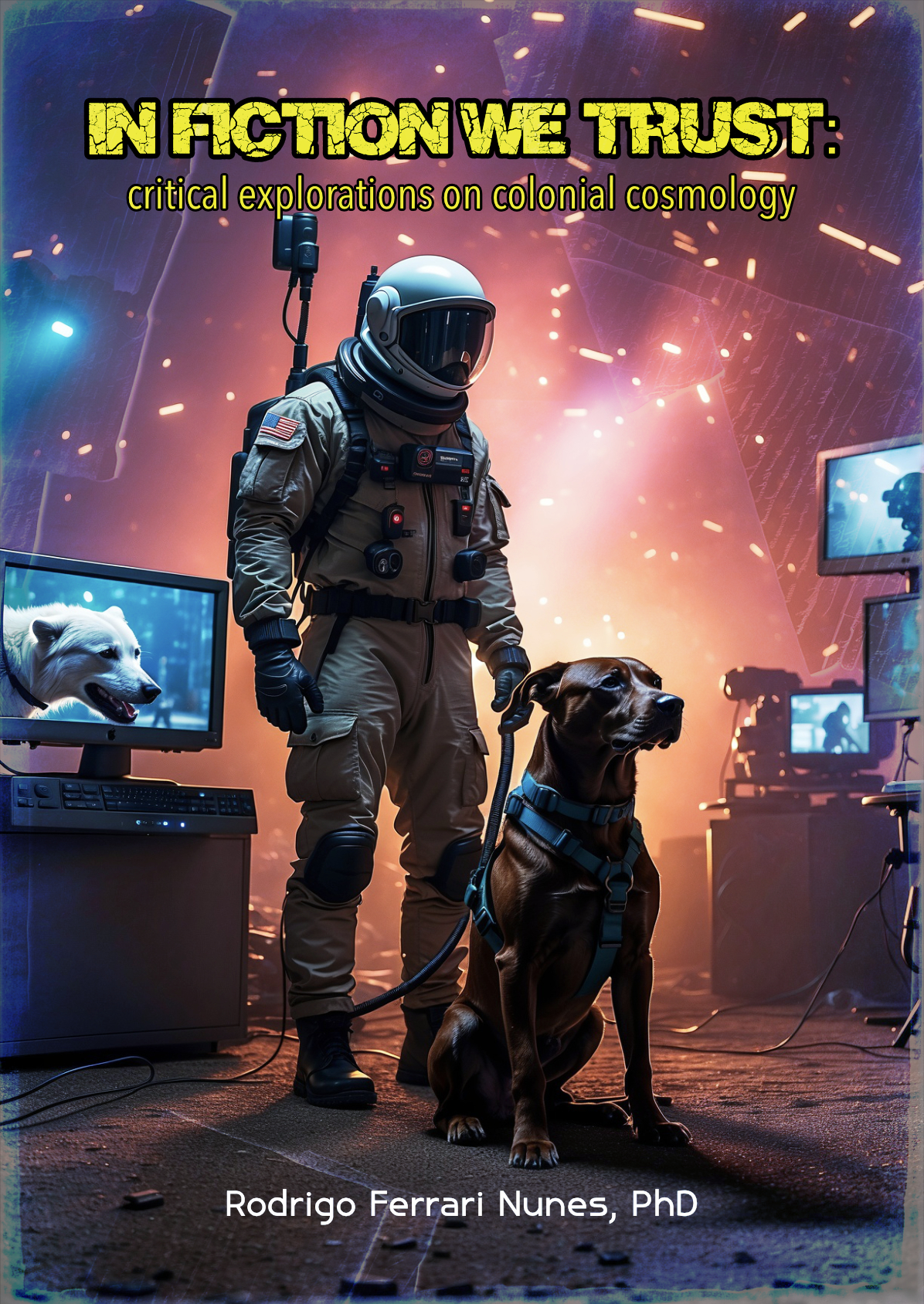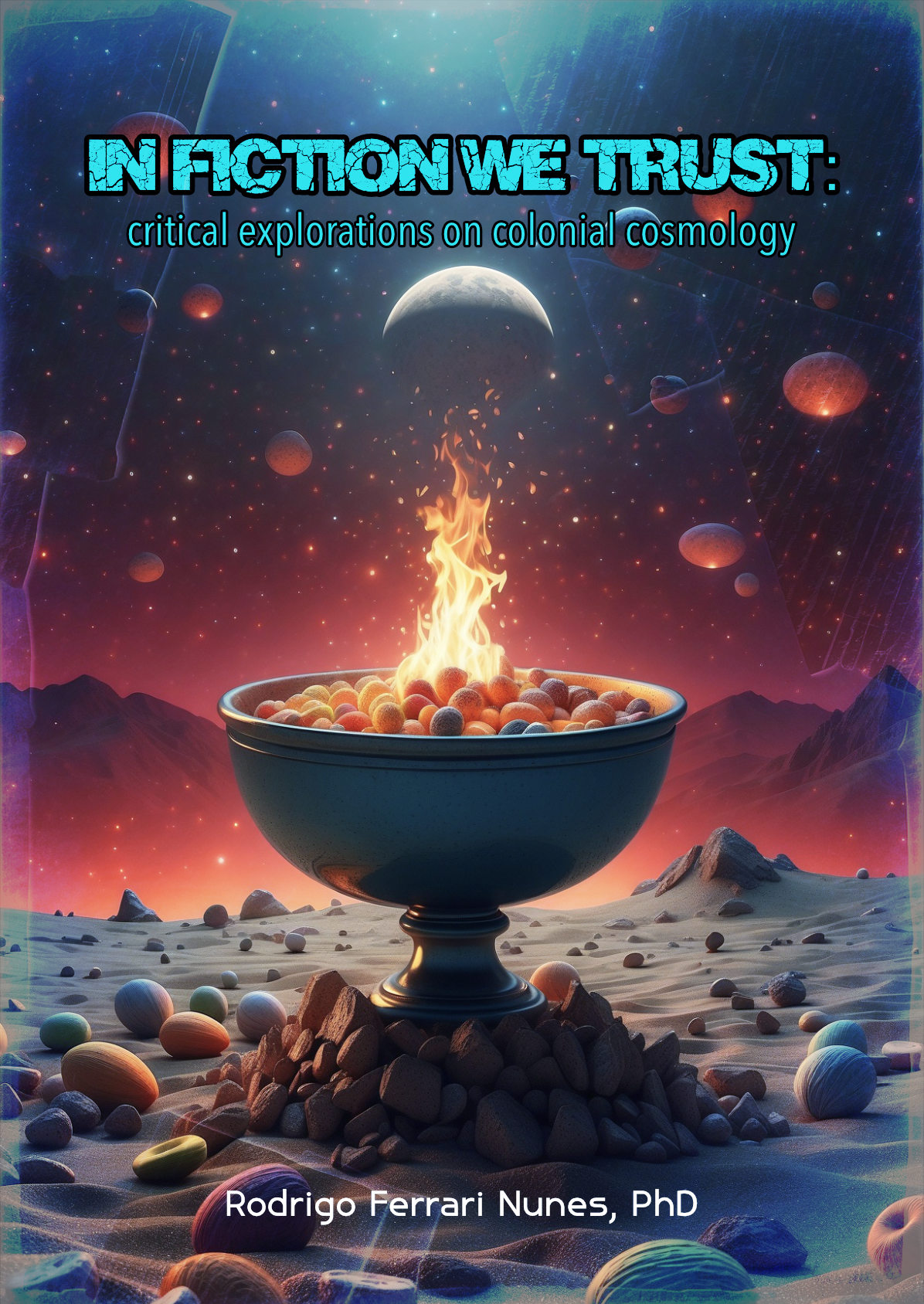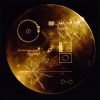
THE APOLLO EFFECT AND SPACE TOURISM
According to vulgar space lore, the so-called Apollo Effect refers to how people were allegedly willing to work harder together while inspired by the Apollo Moon landing story. Alternatively, we may view the Apollo Effect as resulting from the State’s heavy-handed employment of space propaganda in order to galvanize and control the population and its cosmological impressions. The prize for playing along is a career in prestigious aerospace companies. In this nationalistic mythology, astronauts are cast as archetypical and infallible heroes. The veneer of authority, with mathematical simulations and prestigious university pomp is enough to keep academics in these fields in ignorant bliss, thinking that they are working together to eventually colonize the universe with their universal culture. And, of course, it is such an advanced culture that it should be exported to all corners of the known universe. Science fiction leads the way, filling in for the shortcomings of the official story.
The State continuously presents the colonization of space as one of its highest priorities, which should be achieved with the help of its corporate partners. In order to keep enticing the science-fiction infused public, the State and its agents continuously promote the notion that we are about to enter the age of space tourism. It is supposed to be the most amazing thing anyone could ever do. For believers, productions made in parabolic flights, using augmented reality and even cables are good enough. Despite the fact that astronauts seem to be locked inside a flying canister and are deprived from living in human-friendly environments, believers wish to live that way.
The concept has the power to attract and lock people’s imaginations within the confines of the State’s cosmological premises. It makes the unfamiliar familiar, or, as the ironic space cliché goes, making the impossible possible. Since tourism is practiced all over the worlds, the notion of space tourism compels the population to imagine and believe an impossible future that should be just around the corner but never comes. Its mere portrayal as a reality within science fiction films and stories, at movie theaters and at home, is enough to make people feel enthralled and emotionally invested in its realization.
 Since the 1960s the promises of space tourism have proven effective in getting people excited about the State’s futuristic cosmic colonization projects and in promoting aerospace companies. For instance, the flight company Pan Am issued over 93,000 First Moon Flights Club cards. According to the Smithsonian National Air and Space Museum, “Stanley Kubrick’s ‘2001’ (1968) indirectly promoted” Pan Am’s stunt.1 However, Pan Am stopped taking reservations for the Moon flight in 1971, “when financial troubles make it difficult for the company to keep up with new requests.”2 Sometime after August 3, 2019, the Smithsonian deleted an article that discussed the letter Pan Am sent to First Moon Flights Club card recipients. The article received further updates until it was deleted summarily, and it is still indexed in their website search, but not available there.3 The surviving artifacts, such as Pan Am letters and cards, show how Pan Am promoted the same space travel fictions that are still being promoted now. For instance, the film Ad Astra (2019), featuring Brad Pitt, and supported by NASA, depicts an alleged near future in which a trip to the Moon is only a spaceport away, provided by Richard Branson’s Virgin Galactic.
Since the 1960s the promises of space tourism have proven effective in getting people excited about the State’s futuristic cosmic colonization projects and in promoting aerospace companies. For instance, the flight company Pan Am issued over 93,000 First Moon Flights Club cards. According to the Smithsonian National Air and Space Museum, “Stanley Kubrick’s ‘2001’ (1968) indirectly promoted” Pan Am’s stunt.1 However, Pan Am stopped taking reservations for the Moon flight in 1971, “when financial troubles make it difficult for the company to keep up with new requests.”2 Sometime after August 3, 2019, the Smithsonian deleted an article that discussed the letter Pan Am sent to First Moon Flights Club card recipients. The article received further updates until it was deleted summarily, and it is still indexed in their website search, but not available there.3 The surviving artifacts, such as Pan Am letters and cards, show how Pan Am promoted the same space travel fictions that are still being promoted now. For instance, the film Ad Astra (2019), featuring Brad Pitt, and supported by NASA, depicts an alleged near future in which a trip to the Moon is only a spaceport away, provided by Richard Branson’s Virgin Galactic.
In 2015, a researcher called Tracee Haupt wrote a review article on Pan Am’s First Moon Flights Club. She was then an “intern in the Space History Department” and was about to graduate with a B.A. in History and Art History.4 Haupt points out that artifacts like the First Moon Flights Club cards and letters were from a period when people “hoped spaceflight could someday be accessed just by purchasing a ticket.”5 As a typical believer, and to provide at least some information that seems to drive the old story forward, she also announced that the “first privately developed, piloted spacecraft,” called SpaceShipOne was going to be featured as an artifact in the museum.6 Again, such space ships seem to break a basic rule of industrial production — they are developed only to become museum pieces within 10 years, whereas they should represent such an advancement that every travel company and country in the world would be lining up to purchase a fleet of them. Yet, they are never developed at that scale. Just like the incredibly anti-aerodynamic Space Shuttles, such props are never scrutinized independently, and take their place as museum pieces set to reinforce the State’s power and cosmology in future generations.
1 Card, Club, Pan Am “First Moon Flights” https://airandspace.si.edu/collection-objects/card-club-pan-am-first-moon-flights/nasm_A20180010000
2 https://airandspace.si.edu/collection-objects/card-club-pan-am-first-moon-flights/nasm_A20180010000
3 The service WayBackMachine copied the previous versions of this article, available via this link: https://web.archive.org/web/20160705185738/https://airandspace.si.edu/stories/editorial/were-you-member-%E2%80%9Cfirst-moon-flights%E2%80%9D-club
4 Haupt, 2015.
5 Haupt, 2015.
6 Haupt, 2015.

COLONIALISM MA NON TROPPO
Remember the days when museum pieces were antiques? Now, museums feature gadgets that perpetuate the hegemonic fictions of the State, legitimized with the so-called achievements in the human exploration of space. This turn of phrase, common in NASA propaganda productions, slips under the public’s noses the fact that humans are being exploited for the sake of State sponsored cosmological control. To her credit, the anthropologist Lisa Messeri noted that NASA’s space exploration language betrays its colonialist legacy. Concepts like exploration, the frontier, the unexplored, pioneers, missions, and so on, are intrinsic to NASA’s discourse. What Messeri does not notice is how space exploration stories are meant to colonize believer’s minds. She looks at the mythology as lore but fails to grasp the practical significance of this fact — namely, that space exploration stories are simply fiction. In addition, it is repetitive, boring and predictable. This fact, at least for me, shows that the power fiction can have when it is employed alongside authoritarian premises and repeatedly over several generations.
“From calling habitats beyond Earth “colonies” to framing Mars as the next step in America’s manifest destiny, space exploration risks repeating the mistaken colonial assumption of the new territory, in this case the cosmos, as empty.” 7
Yet, Messeri misses the point. For her, the problem lies in imagining the cosmos as “empty” which she claims to be how colonialism portrays its frontiers. This does not match what we know about the history of Europe’s colonial expansion, which involved the colonization and conversion of other people, and not simply taking over empty lands. The main concern of Jesuit missionaries and Inquisitors was the forced conversion and control of people who did not conform to their religious ideas. Space exploration stories feature so-called missions that have the same intention — promoting the State’s space religion and colonize people’s minds with supposedly unquestionable fictions. Instead of focusing on how cosmological colonialism enforces the passive submission to astrophysical authority, Messeri claims that the danger of NASA’s colonialist language is simply imagining places beyond the frontiers as empty.8 Her dependence on astrophysical lore, despite contradictions, is almost complete.
7 Messeri, 2017, p. 335.
8 Messeri, 2017, p. 335.

INVERSE SQUARED MINDS
Messeri’s work is an oddity. Its critical potential is thoroughly contained by glaring limitations of socioeconomic and cosmological order. Holding an academic position in a mainstream institution, and having accepted space industry-linked funding also pressure her to conform. Her nod to the established cosmology makes her an unwitting accomplice in the perpetuation of various space frauds, including the Apollo missions. Finally, her “dark side of the moon” blunder mentioned earlier signals a potential cosmological handicap that makes her vulnerable to vulgar mathemagics. Messeri thinks that the only limitation to cosmic colonization is technological. Of course, if science fiction solved this problem, ergo the paradigmatic universal scientists are almost there:
“The limits of today’s instruments commit scientists to describing planets as only “potentially” habitable. This potential could refer to the potential inhabitation of life forms already there, but just as easily this could slip to the potential for us humans to one day inhabit these worlds.” 9
Messeri manifests a fundamental blindspot in this passage that is common among colonial cosmology believers. For her, starlight travels without losing its power for millions, even billions of light years. The very notion of light years is in itself a preposterous mathemagical proposition — that is, it can only be postulated with math and not independently verified. The idea that better technology will eventually establish contact with aliens is a science fiction cliché. This myth makes so that large corporations and scientists who claim they are making magical space travel technologies, such as hyperdrives, will continue to get funded, despite going nowhere.
Moreover, the idea that people can measure light years just like they measure anything in the real world, like a table, is pure fiction. Rupert Sheldrake points out in The Science Delusion (2012) that the idea that the speed of light is constant was never proven. That is, an “international committee fixed the speed of light by definition in 1972, putting an end to embarrassing variations.”10
Light loses power as it travels. This simple verifiable fact is known as the inverse square law. Astronomers have traditionally applied this law when discussing heat, and ignore factors like relative brightness and intensity changes. Some claim to apply this inverse square law to starlight, but claim the alleged distances make no difference. They created a scale of brightness and distances for star observations and make it fit their light year doctrine and math. We find one such example in Sir Robert Ball’s book, In Starry Realms (1908). In a passage that discusses how much sun heat should reach Jupiter, he argues that it “can easily be shown that the intensity of the heat received from any source decreases as the distance of the source decreases.”11 In addition, he argues that “we may express the law generally in that form in which nature loves to work, that the intensity of the heat received from a source varies as the inverse square of the distance.”12
Subsequently, Ball runs into a conundrum with his simplistic mathematics: if the “intensity of the sun heat on Jupiter is only one twenty-seventh part of that which is received on the earth,” how can Jupiter be surrounded by gases?13 The answer, for Ball, is that something other than the sun should be heating Jupiter. Again, in no point does Ball even hints at stepping beyond the limits that the colonial cosmology imposed. Nor does Ball ever wonder why, as a hot air balloon rises in the air, getting closer to the sun, temperatures do not rise slightly, but fall dramatically.
9 Messeri, 2017, p. 335.
10 Sheldrake, 2012, p. 169.
11 Ball, 1908, p. 191.
12 Ball, 1908, p. 191.
13 Ball, 1908, p. 191.

SIMULATE NOT SHOW
As computers were developed, the math from the early twentieth century led to simulated astrophysical visualizations. Astrophysicists became increasingly dependent on assumptions and simulations and more disconnected from the actual world around them. Since their simulations do not correspond to verifiable facts and reality, they developed several handicaps along the years.
For instance, it is apparent that the entire branch of knowledge regarding visual perspective, and the lensing and obscuring effects of air density and conditions are hidden from astrophysical theorizing. In a video I analyzed in 2019, three astrophysicists came out to debate three Flat Earthers.14 One of the astrophysicists actually proclaimed that one should see Toronto from New York, imagining that the air between these places consists of a fully transparent vacuum or nothing. He ignored what all meteorologists, skippers and airplane pilots know as visibility. Effects like the Fata Morgana and other distortions are wholly unknown phenomena in the cosmos that astrophysicists imagine. Their dependence on mathematics drives them ever farther from reality, and hinders their ability to verify, test, and ask questions about the world.
In the same video, another materialist astrophysicist gets carried away emotionally and rants profusely against all religious people, arguing that no religious person would ever provide any evidence for their claims. When he was asked what he actually studied, he explained that he focuses on what allegedly happened before the Big Bang. For him, it is possible to study an element of an unprovable theory that allegedly happened over 14 billion years ago in a laboratory. Surprisingly there is nothing unrealistic or religious about studying something that happened before the whole universe allegedly came into being from the present. Yeah, and it can be done in a laboratory, he affirms. The premise is so ridiculous but it inspires him to boil into a rant against all those unrealistic, obviously ignorant religious folk. Of course, he conveniently forgets that all of his colonial science heroes, from Copernicus to Newton and Kepler were openly religious. Somehow the astrophysicist is convinced that he holds no dogmatic beliefs and that nobody else, especially if they have feelings or beliefs that could be called religious, could ever test anything objectively. As such, this makes astrophysicists bigots in a cosmic scale, with egos that have been inflated by fiction alone.
This gives him the confidence that others who test and measure phenomena in the real world must be wrong. After all, they did not have to memorize formulae or take multiple choice tests to earn an expensive degree. After all, astrophysics somehow carries great prestige in our present social worlds. Ironically, however, it is simply based on fiction. For such scientists, the fact that people without much formal training are able to expose their hocus-pocus and laugh at them is infuriating. For us, it is hilarious. It reminds us of Aristotle’s truism, the higher the State, the greater the fall that follows. Indeed, no matter how long it may take, truth will prevail and bring down all astrophysical fictions. As Nancy Cartwright noticed, whereas Descartes tried to explain everything by calculating nothing, “Newton, with the inverse square law of gravitation, calculated everything and explained nothing.”15 The cosmology imagining game that believers play with abstract, generalizing math, depends on thought patterns and assumptions which are enmeshed with and inextricable from the colonial imagination.
14 Ferrari-Nunes, 2019.
15 Cartwright, 1983, p. 74-75.
REFERENCES
Ball, Sir Robert
1908a A Treatise on Spherical Astronomy. Cambridge: Cambridge University Press.
1908b In Starry Realms. London: Sir Isaac Pitman & Sons, LTD.
Cartwright, Nancy
1983 How the Laws of Physics Lie. Oxford: Oxford University Press.
Ferrari-Nunes, Rodrigo
2019 Play by Play Analysis: Jubilee’s ‘Flat Earthers vs Scientists — Can We Trust Science?’
Haupt, Tracee
2015 Were You a Member of the “First Moon Flights” Club? Smithsonian National Air and Space Museum. Online, https://web.archive.org/web/20160705185738/https://airandspace.si.edu/stories/editorial/were-you-member- %E2%80%9Cfirst-moon-flights%E2%80%9D-club.
Messeri, Lisa
2017 Gestures of Cosmic Relation and the Search for Another Earth. Environmental Humanities 9:2 (November 2017), 325–340.
Sheldrake, Rupert
2012 The Science Delusion. London: Coronet.













